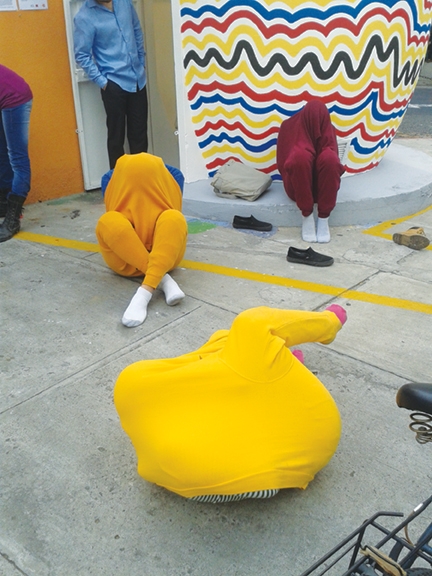This October, one of the longest-running and farthest-reaching exhibitions to ever take place will end its 25-year run with a stop at the Kalamazoo Institute of Arts.
The do it exhibit began in Paris in 1993 under the direction of curator Hans Ulrich Obrist and has travelled all around the world ever since. While its staying power is unique, what really sets it apart is the concept, which includes a call for full-on community participation in the creation of art and a discussion about what constitutes art.
The anchor art in the exhibit is created by local artists, art instructors and community organizations who have received their instructions from the do it book, which contains ideas from more than 300 artists, including Yoko Ono.
Don Desmett, curator for the exhibit, said at least 20 instructions had to be picked, but the KIA ended up selecting 30.
“Those will be spread out among organizations and artists and some will actually happen in the gallery with the audience,” Desmett said.
Participants include the Kalamazoo Children’s Chorus, the Black Arts & Cultural Center and Wellspring/Cori Terry & Dancers. Although he doesn’t know for sure, Desmett said he thinks Wellspring will do a performance of some kind and have it videotaped, but they also may be invited into the gallery to do live performances.
“We don’t normally get to work with other organizations in this capacity,” he said.
Wellspring’s instructions came from Lucy Lippard, an art critic and activist. Her directions are to “to do something that is visually striking, socially radical, sustainable in the public domain, hurts no living thing, and will change the world.”
Artist Robert Barry, who also contributed to the do it book, keeps his instructions short and to the point: “Do something unique that only you in the world can do, and don’t call it art.”
If this sounds open-ended, it is — as are most of the instructions, according to Desmett.
“It could be an instruction that could have more than one interpretation,” Desmett said. “The Children’s Chorus and a local artist will do different interpretations using the same instructions. So the Children’s Chorus is going to do something and we have no idea what the end result will be.”
While some organizations were given more than one instruction choice, others were given just one. Participation could be one person or a group.
From a curator standpoint, Desmett said, “It’s fascinating and scary at the same time. I’ve been putting shows together for about 30 years now and I always know what the show is and where things are going, and with this show, everything is coming in at the last minute.”
The exhibit opens on Oct. 27 and runs through March 3. Desmett said he and KIA staff will likely be working to put it together right up to the opening.
Each do it exhibition is uniquely site-specific because it engages the local community in a dialogue that responds to and adds a new set of instructions, while it remains global in the scope of its ever-expanding repertoire. Ono’s Wish Tree instructions have been followed in cities around the world, including New York, Paris and Dublin.
Hers is an ongoing art installation series started sometime after 1981, in which a tree native to a site is planted under her direction. Viewers are usually invited to tie a written wish to the tree, except during the winter months, when a tree can be more vulnerable. Her 1996 Wish Piece had the following instructions: “Make a wish. Write it down on a piece of paper. Fold it and tie it around a branch of a Wish Tree. Ask your friends to do the same. Keep wishing. Until the branches are covered with wishes.”
Katie Houston, KIA spokesperson, said the Wish Tree is something tangible that can be left behind.
“I’m excited about the community feature of the do it exhibition,” she said. “It’s different every time and every place. We’re broadening the definition of what art is.”
Kalamazoo Institute of Arts
314 S. Park St., Kalamazoo
Oct. 27-March 3
kiarts.org





